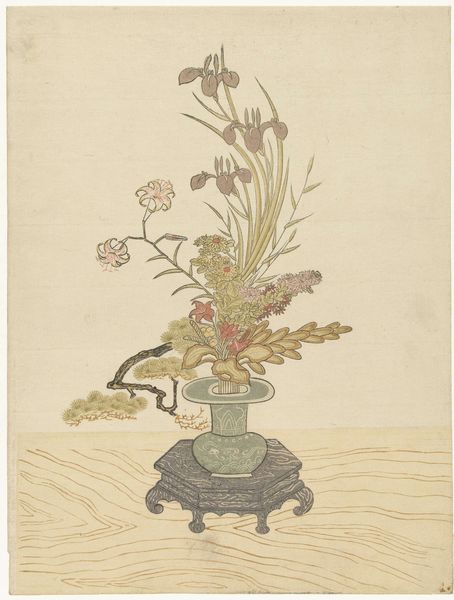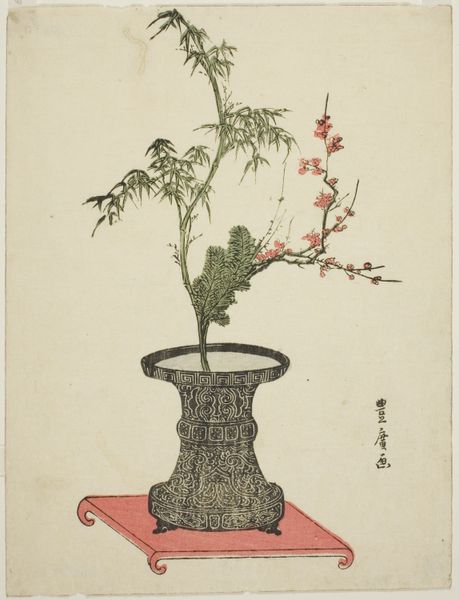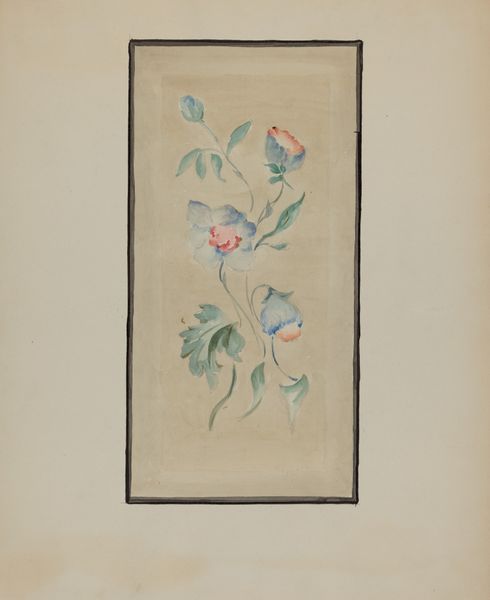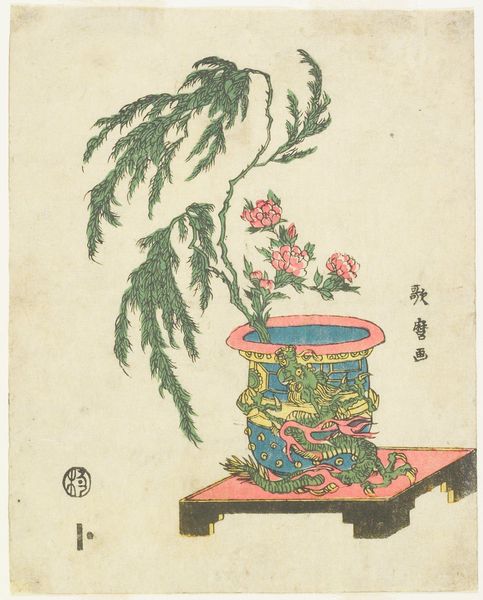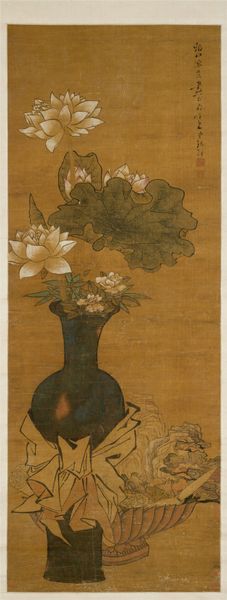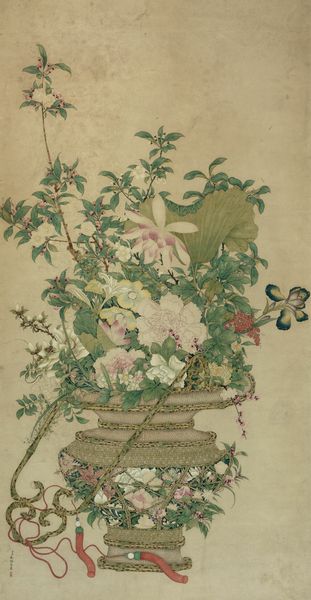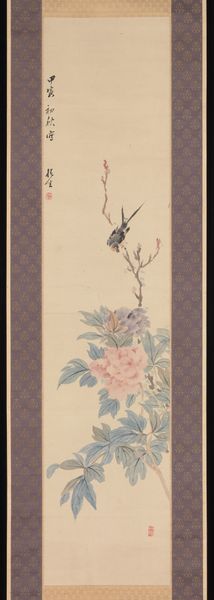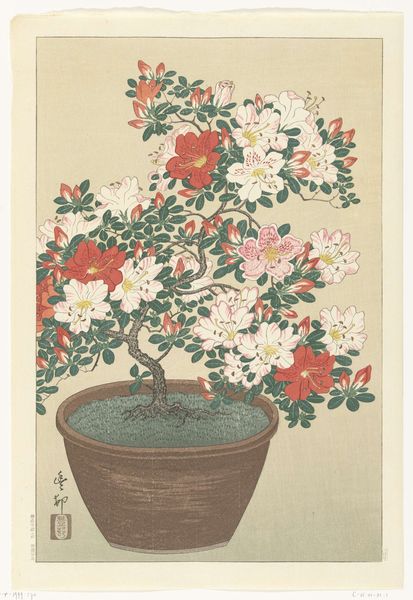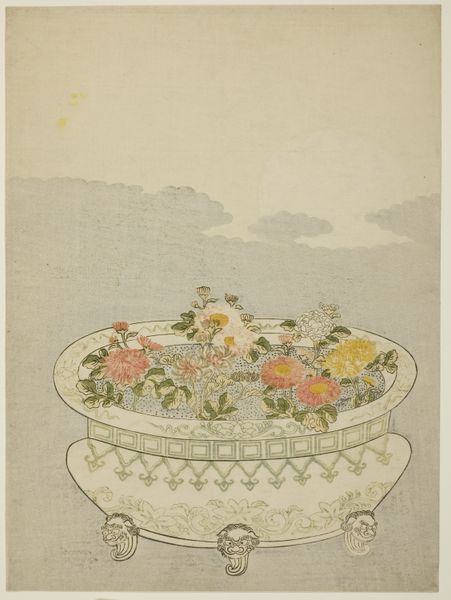
Ike Bana (Flower Arrangement) in the Ike-no-bo Style 1760 - 1770
0:00
0:00
# print
#
asian-art
#
ukiyo-e
#
orientalism
Dimensions: H. 11 1/8 in. (28.3 cm); W. 8 3/8 in. (21.3 cm)
Copyright: Public Domain
Suzuki Harunobu made this woodblock print, "Ike Bana (Flower Arrangement) in the Ike-no-bo Style," sometime in the mid-18th century. It depicts an example of ikebana, the Japanese art of flower arrangement, specifically in the classical Ikenobo style. During this time, Japan was under the rule of the Tokugawa Shogunate, a period marked by relative peace and economic growth, but also strict social hierarchies. Arts like ikebana were not mere aesthetics, they were tied to cultural identity and social standing. The Ikenobo school, with its roots in Buddhist temple flower offerings, was the oldest and most prestigious school of ikebana. By depicting this style, Harunobu is alluding to a tradition deeply embedded in Japanese cultural history and, perhaps, commenting on the value of such traditions in the rapidly changing urban environment of Edo-period Japan. To understand this work fully, we need to consider the history of Japanese aesthetics, the social role of art, and the cultural values of the Edo period.
Comments
No comments
Be the first to comment and join the conversation on the ultimate creative platform.
